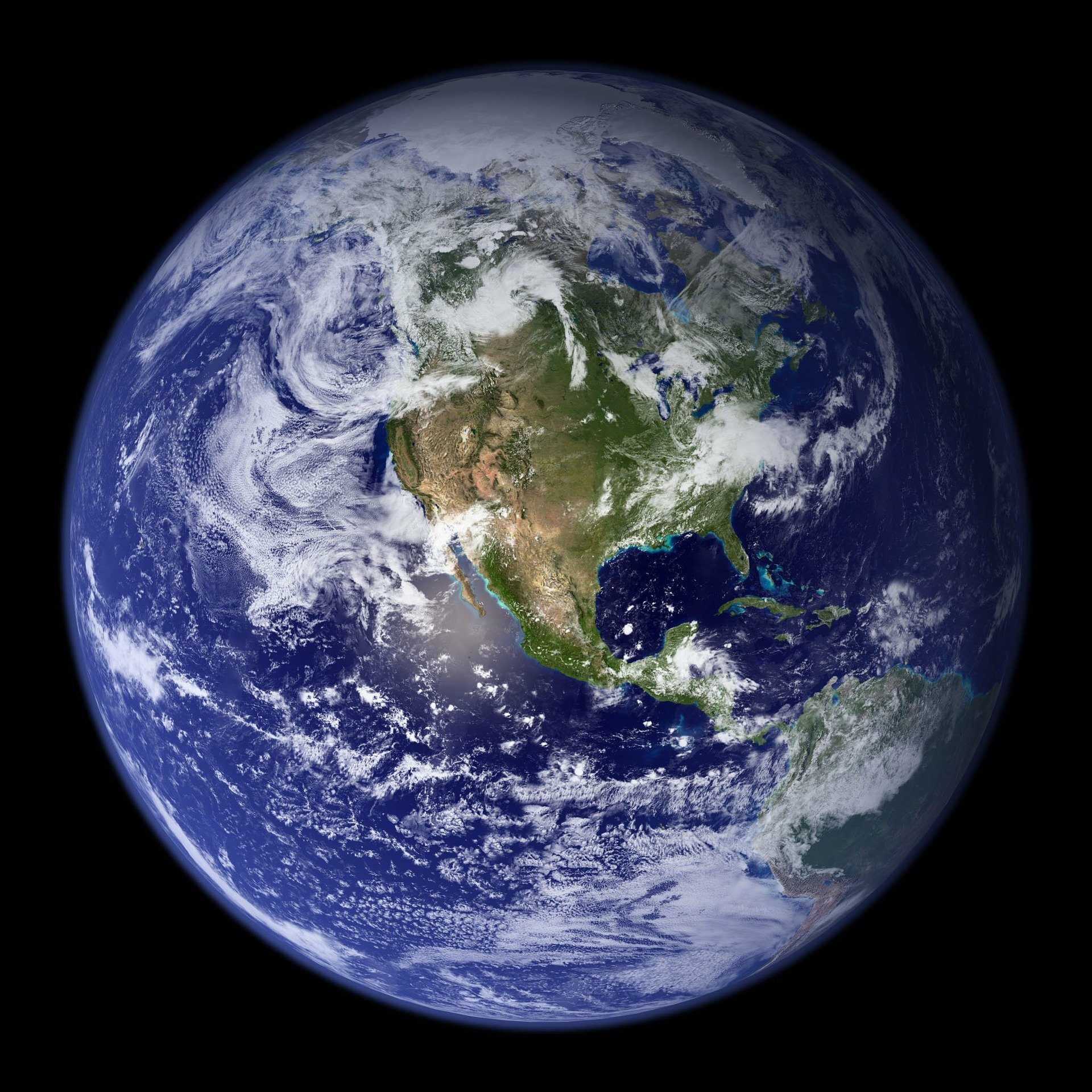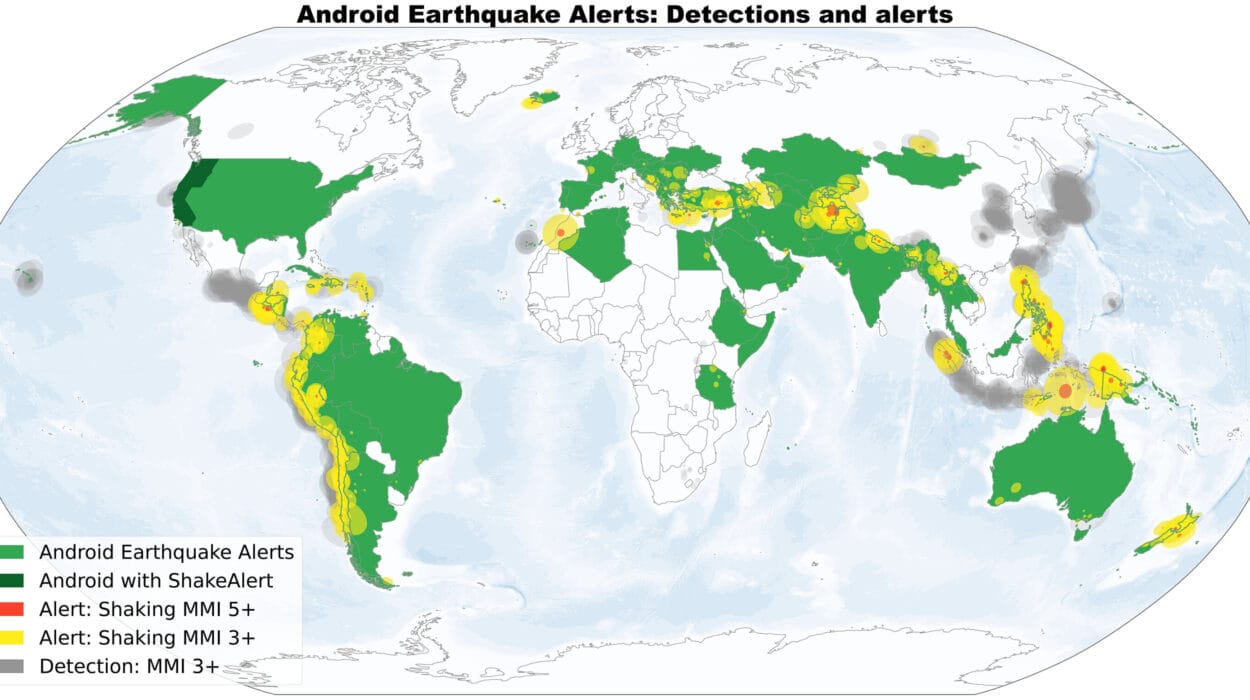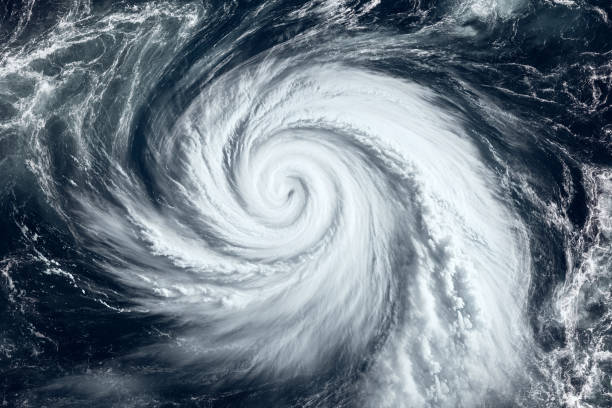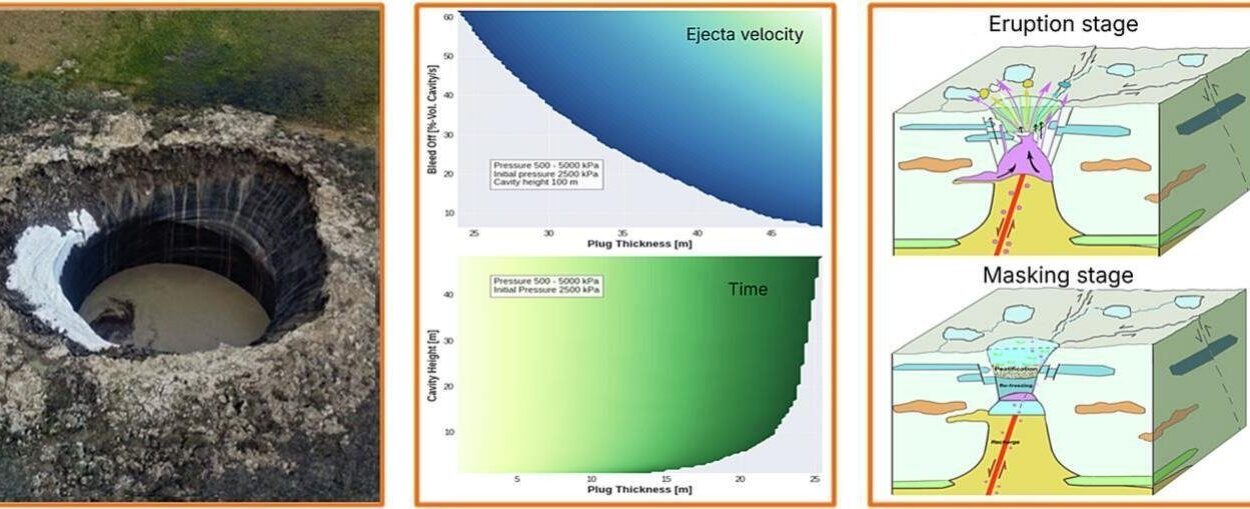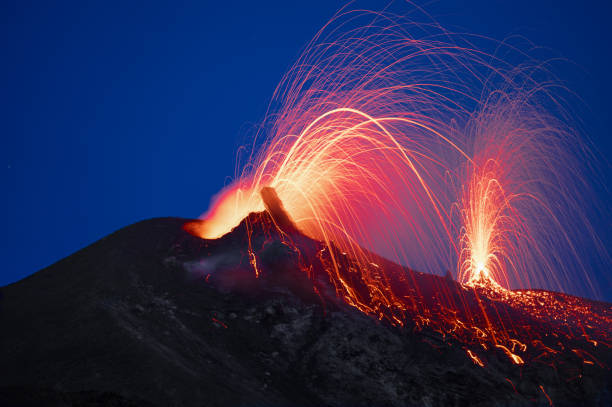Every second of every day, whether we feel it or not, the ground beneath our feet is moving. Earth spins, tirelessly and gracefully, as it has for billions of years. From the stillness of the forest floor to the height of cloud-scraping mountains, the entire planet is turning at over 1,600 kilometers per hour at the equator. Yet we rarely give it a second thought.
But that silent rotation is far more than just a cosmic pirouette. It is one of the most powerful forces shaping life on Earth. Without it, winds would not spiral, storms would not spin, and the weather patterns we depend on for rain, warmth, and harvests would collapse into something unrecognizable. Earth’s rotation is not just a quirk of planetary physics—it is the engine behind the very breath of the planet.
To understand how Earth’s spin affects the weather is to glimpse the elegant machinery of the natural world, a choreography of motion and energy where invisible forces shape the skies above us. Let’s take a journey into the atmosphere and explore how our planet’s rotation influences the dance of winds, the birth of storms, and the grand circulation systems that define our global climate.
A Spinning Origin Story
Earth’s rotation began long before there was even an atmosphere. More than 4.5 billion years ago, in the early days of the solar system, a cloud of dust and gas collapsed under gravity to form our Sun and its orbiting planets. As matter coalesced into Earth, it inherited angular momentum from the rotating cloud that birthed it. The young planet spun faster than it does today, completing a full rotation in just a few hours.
Over the eons, that spin has slowed, tugged on by the gravitational forces of the Moon and Earth’s own internal friction. Today, Earth rotates once every 24 hours relative to the Sun, giving us day and night. But while we marvel at sunsets and sunrises, there’s a far more subtle and profound consequence of this rotation: its effect on the air above us.
The Coriolis Effect: Twisting the Winds
At the heart of Earth’s rotational influence on weather lies an elegant and slightly counterintuitive phenomenon called the Coriolis effect. Named after French mathematician Gaspard-Gustave de Coriolis, who first described it in 1835, this effect explains why moving air (and water) appears to curve as it travels across Earth’s surface.
Imagine standing on a giant spinning carousel, tossing a ball straight across to someone sitting opposite you. From your perspective on the rotating surface, the ball seems to curve away, even though it’s actually moving in a straight line. Earth works in much the same way. Because the planet spins eastward, anything that moves freely—like air—gets deflected: to the right in the Northern Hemisphere, and to the left in the Southern Hemisphere.
This deflection doesn’t just change the path of a breeze. It’s the reason our winds rotate in spirals rather than flowing directly from high-pressure areas to low-pressure areas. Without the Coriolis effect, weather systems would look drastically different. There would be no swirling hurricanes, no jet streams streaking across continents, no elegant symmetry to Earth’s great wind belts.
The Great Atmospheric Conveyor Belt
The rotation of Earth divides the atmosphere into distinct bands of circulation that govern how air moves globally. These are the Hadley, Ferrel, and Polar cells—massive loops of air that span from the equator to the poles and cycle heat, moisture, and pressure around the planet.
At the equator, intense solar heating causes warm air to rise, creating a zone of low pressure. As this air ascends, it cools and spreads toward the poles. Eventually, it sinks back to Earth at around 30° latitude, creating high-pressure zones and returning toward the equator as surface trade winds. This is the Hadley cell.
In the middle latitudes lies the Ferrel cell, where air flows in the opposite direction to the Hadley and Polar cells. And near the poles, cold, dense air sinks and flows toward the equator before rising again at around 60° latitude.
But it’s not just solar heating driving these circulations. Earth’s rotation bends each of these flows, sculpting global wind patterns into specific directions. The trade winds, for instance, blow from the northeast in the Northern Hemisphere and from the southeast in the Southern Hemisphere—both curved due to the Coriolis effect. The westerlies, which dominate the mid-latitudes, blow from the west, not because of Earth’s tilt or the position of the continents, but because of the way rotating Earth deflects their path.
Without rotation, these cells might still form, driven solely by the temperature contrast between equator and poles—but they wouldn’t spiral, and their boundaries wouldn’t be as sharply defined. The complex interplay between solar energy and planetary spin creates the structured yet dynamic atmosphere we know.
Storms That Spin: Birth of a Cyclone
Nowhere is the power of Earth’s rotation more dramatic than in the formation of cyclones. Whether you call them hurricanes, typhoons, or tropical cyclones, these monstrous storms are masterpieces of rotational physics.
A cyclone begins with warm ocean water and moist air rising into the atmosphere. As this air rises, it cools, condenses, and releases energy—fueling further uplift. But as the storm strengthens, the rotation of Earth twists the winds feeding into it. This spinning, induced by the Coriolis effect, causes the storm to rotate counterclockwise in the Northern Hemisphere and clockwise in the Southern Hemisphere.
This rotation isn’t just a byproduct—it’s essential. Without the Coriolis effect, the swirling structure of a cyclone couldn’t form. In fact, tropical cyclones don’t form close to the equator, where the Coriolis force is too weak to impart spin. It’s a breathtaking example of how Earth’s rotation gives storms their defining structure.
As cyclones grow, they become self-sustaining engines of heat and motion, towering tens of kilometers into the sky and spanning hundreds of kilometers across the ocean. The rotation of the planet not only gives them shape but steers their movement across the globe.
The Jet Stream Highway
High above our heads, at the boundary between the troposphere and the stratosphere, rivers of fast-moving air race from west to east. These are the jet streams, and they exist because of Earth’s rotation and temperature contrasts between air masses.
The most prominent is the polar jet stream, which meanders between 30° and 60° latitude in both hemispheres. These high-altitude winds can reach speeds over 400 kilometers per hour and play a critical role in guiding weather systems, including storm tracks, high-pressure ridges, and cold snaps.
Jet streams form at the boundaries of air masses with different temperatures. Earth’s rotation then acts to channel these differences into narrow, powerful bands of wind. These winds don’t flow in straight lines—they twist and ripple like giant serpents in the sky. Their undulations, known as Rossby waves, can cause cold Arctic air to plunge southward or tropical warmth to surge north.
The behavior of jet streams helps explain why winters can suddenly become frigid or why summer heat waves can become prolonged and intense. As climate change affects temperature contrasts between the poles and equator, scientists are watching jet streams closely. Already, some evidence suggests they are weakening and becoming more erratic—a possible harbinger of increasingly unpredictable weather.
Ocean Currents: The Water Mirrors the Wind
Earth’s rotation doesn’t just shape the skies; it also sculpts the sea. Surface ocean currents, like wind currents, are profoundly influenced by the Coriolis effect. In fact, many major ocean currents follow the same patterns as atmospheric winds—westward near the equator, eastward at mid-latitudes.
The result is a series of vast rotating systems known as gyres, found in every major ocean basin. The North Atlantic Gyre, for example, includes the warm Gulf Stream flowing north along the U.S. East Coast, which moderates European climates, and the cold Canary Current returning southward.
These rotating ocean currents act as conveyors of heat, redistributing solar energy around the planet. They also influence weather. The El Niño and La Niña phenomena, which arise from changes in Pacific Ocean currents and temperatures, affect rainfall and drought from South America to Australia to Africa.
All of it—these swirling gyres, these undulating winds, these spinning storms—can be traced back to one underlying movement: the rotation of Earth.
Day and Night Winds: Local Weather’s Subtle Dance
While Earth’s rotation shapes global patterns, it also creates local weather phenomena through its interaction with day-night cycles. One example is land and sea breezes. During the day, land heats up faster than water, causing air to rise over land and draw in cooler air from the ocean. At night, the process reverses. But on a rotating planet, even these local breezes are subtly curved by the Coriolis effect.
The result is not just a back-and-forth wind, but a twisted flow that, in certain conditions, can even contribute to the formation of thunderstorms or influence the paths of coastal fog. Farmers, sailors, and fishermen have read these signs for centuries, intuitively understanding what science would later explain.
Earth Without Spin: A Still Planet’s Strange Skies
What if Earth didn’t rotate? The consequences would be both immediate and profound. A day would no longer last 24 hours—it would stretch indefinitely as one side of the planet faced the Sun and the other faced the void. One half of the world would bake under eternal sunlight, the other would freeze in permanent night.
Atmospheric circulation would collapse into a simple two-cell system: hot air rising at the subsolar point (the point directly under the Sun) and sinking at the cold dark side. Winds would rush in straight lines from dark to light, uninfluenced by Coriolis curvature. Storms wouldn’t spiral; they’d simply surge forward like unstructured masses of wind and rain. The jet streams would vanish. Ocean currents would stagnate. The complexity, the balance, the beauty of Earth’s dynamic weather would disappear.
The world would be still—but not peaceful. It would be brutal, barren, and lifeless for much of the surface. Earth’s spin, then, is not just a scientific curiosity—it is the condition that makes life as we know it possible.
The Long Slow Drift of Time
Earth’s rotation is not fixed. It is slowing, ever so gradually, by about 1.7 milliseconds per century. The cause is tidal friction—gravitational interactions with the Moon that cause Earth to bulge slightly and create drag. Millions of years from now, days will be longer. And billions of years from now, Earth could become tidally locked with the Moon, just as the Moon already shows only one face to us.
But even now, scientists measure minute variations in Earth’s rotation using atomic clocks and laser ranging. These measurements help improve weather forecasting, satellite navigation, and even earthquake detection. They remind us that the spin of the planet is a living, breathing part of its identity—a clock by which all life runs.
Spinning Into the Future
As we look ahead, Earth’s rotation will continue to play its subtle, powerful role in shaping weather and climate. But human influence now tugs at that balance. Climate change alters the temperature gradients that drive winds and jet streams. Ice melt and ocean redistribution can shift Earth’s mass and slightly alter its spin.
Our weather is no longer purely a product of nature—it is now, in part, a reflection of our actions. Yet the rhythms remain. The sun will rise. The winds will turn. The planet will spin.
Understanding how Earth’s rotation affects weather is more than an academic exercise. It is a reminder of how intimately connected we are to the planet’s motion, how our daily lives are shaped by a cosmic dance that began long before we walked the Earth. The next time you feel the breeze on your face or watch clouds spiral in the sky, remember that you are part of something grand, beautiful, and ever in motion.
